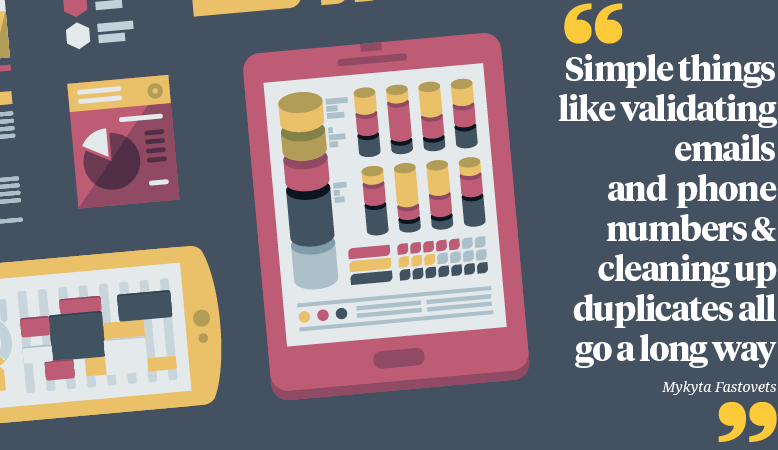Data-driven enterprises take note: you may be doing it wrong, says Antony Reeve-Crook
In an industry dedicated to matchmaking, unused data presents a missed opportunity. It is crucial to the success of our businesses that records are not only collected but analysed, with conclusions drawn and our activity adjusted. The conclusions we act on are, after all, what directs the future of the business.
But what data are we actually using? Registrant records? Early-bird bookings? Most-cost effective stand size? We can find the answer to all of these questions with little difficulty in an age of digital data capture.
What about answers to the questions we aren’t asking? Competitive advantage is to be gained from accessing information that isn’t known by the rest of the market. Getting ahead on the emerging trends might give you a lead over your competitors that can’t be clawed back.
“Some of the very big organisers are thinking about this, and are hiring dedicated analysis teams that look at the data. The vast majority, however, don’t really do anything with the data they have,” says Mykyta Fastovets of event technology provider ExpoPlatform. “And frequently what little analysis is conducted revolves around marketing and advertising functions (third-party mail shots, marketing figures).
“The first step is collecting reliable data. Simple things like validating emails and phone numbers and cleaning up duplicates go a long way.”
It’s also important to collect as many data points on each individual as possible, he says. This doesn’t mean increasing the number of marketing questions during registration, instead it means gathering activity information on the show floor, website and app.
So where and how should organisers gather their data in order to extract useful information? It’s a difficult question, explains Fastovets. “On the one hand, social networks have a lot of information, but that information is often not related or relevant to the capacity in which they may visit an event. I would say that the safest and most reliable source of data is the event itself. Historic data is also very important, so data should be kept for as long as possible.”
“Once a reasonable size dataset is built up there are a number of techniques that can spot patterns in that data without requiring any preconceptions. Without getting too technical, unsupervised learning algorithms can then be used when looking for unexpected patterns in collected data,” he explains.
Wind it up and let it go, in other words. You may not have a use for it today, but tomorrow you may do.
All of this may sound simple but it’s by no means an easy process. No challenge with an enviable goal is. Data collection procedures are prone to errors, with little control in software and in staff training to collect accurate data. Doing it right means training or finding someone who knows what they’re doing, and that comes at a cost.
Which brings us back to matchmaking. According to Fastovets, in the past our matchmaking worked like an opt-in pool where those looking to be matched answer three simple questions about their goals for attending the event. The system would then match all candidates in the pool based on their requirements.
“So, for example, a manufacturer looking for a distributor would appear on the results list of a distributor looking for a manufacturer,” he explains. ExpoPlatform is accommodating this evolution in matchmaking by employing a little bit of machine learning to “greatly improve the content and the order of the matches the list of matches an individual or a company might get when using the system”.
What is for certain is that while it makes sense to store information in your organisation to support predictable observations, to get ahead companies need to ensure they are harvesting data that may hold an advantage they haven’t yet had cause to discover. EW







